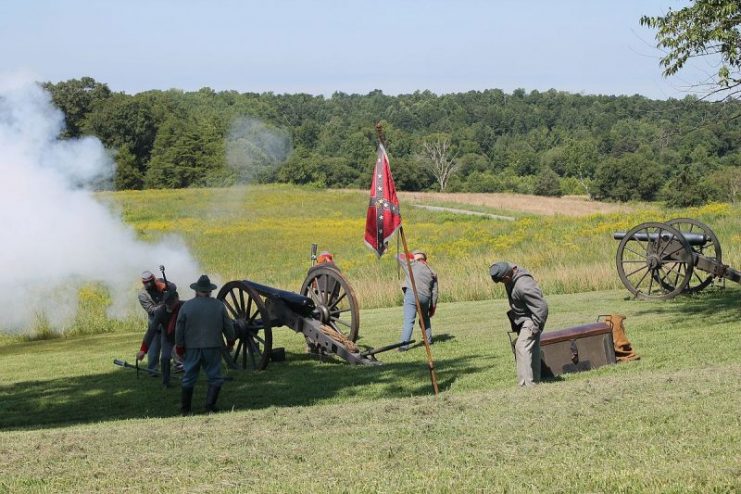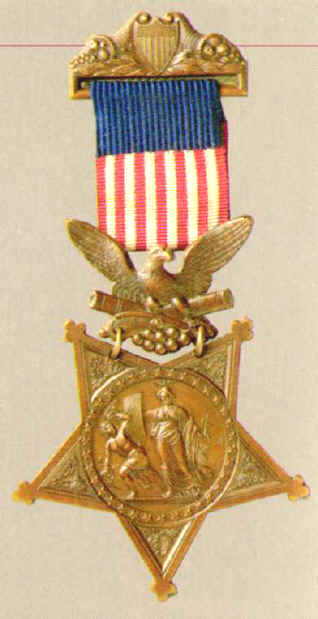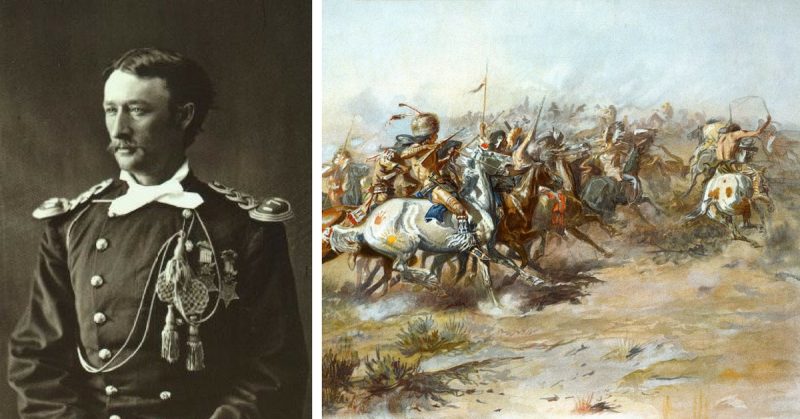The name Custer in military history is usually associated with a disaster. General George Custer’s expedition during the Indian Wars famously ended in his last stand at Little Bighorn. Leading the US 7th Cavalry to their demise, Custer’s decisive defeat continues to gain the attention of students of history. What is little known is that Custer made his last stand with several members of his family and friends. Among those to fall was the first two-time Medal of Honor recipient for the US Army.
Younger brother to the General, in his early 20’s Thomas Custer distinguished himself with several acts of gallantry during the American Civil War. More impressively, the younger Custer did it in just one week. During the Battle of Namozine Church, Thomas and his horse leaped a barricade to seize the enemy’s colors. Four days later, he was at it again. At the Battle of Sailor’s Creek, Thomas took a shot to the face and yet still emerged with the enemy’s flag. For each of his actions, Custer was awarded the Medal of Honor and a distinct place in military history as the first soldier to become a two-time recipient.
A Military Tradition
Thomas Custer was born as the third son of Emanuel and Marie Custer in 1845 Rumley, Ohio. With his older and famous brother George well on his way to military greatness, Thomas was eager to get in on the action himself. He attempted to enlist at the age of 15, but his father put an end to his enthusiasm to join the war for a time. By the age of 16, Thomas was a private with the 21st Ohio Volunteer Infantry.
Prior to picking up his Medals of Honor in 1865, Thomas proved himself a reliable and formidable soldier on his own merit. He participated in various campaigns throughout the western theatre including the Battles of Stone River, Missionary Ridge, Chickamauga and the Atlanta campaign. Unafraid to jump into the fray, at just 20 years old Thomas was an experienced and hardened veteran of war. In 1864, he was commissioned a Second Lieutenant and served alongside his brother as his aide-de-camp for the remainder of the war. There in his seemingly simple role, Thomas earned a unique place in military history. While his brother gained fame, or infamy depending on how one looks at it, it was Thomas who fell at Little Bighorn more highly decorated.

Capture the Flag
To the modern youth, capturing an enemy flag is of little consequence or importance. However, among military units of the Civil War the colors represented much more. To obtain the colors was so significant that men would risk death to do so. For young Thomas, it seemed to be a joy for he picked up his first Medal of Honor doing just that.
Near the beginning of the famed Appomattox campaign, Union and Confederate forces came to blows near Namozine Church. While the battle itself was nominal, the actions of Thomas Custer were anything but. Charging the Confederates on his horse, Thomas jumped over a barricade through withering enemy fire. Recognizing the color bearer, he charged ahead and captured the Confederate flag while ordering those around him to surrender. Perhaps sensing the end of the conflict was near, the rebels obliged. For his actions on April 3, 1865, Thomas was awarded the nation’s highest military honor.
Not one to rest on his laurels, his next act of inexplicable gallantry came just 4 days later. During the Battle of Sailor’s Creek in Virginia, Thomas once again had the enemy’s colors in his sight. Charging across the Confederate barricade, he and his horse once again leaped into action. Firing his pistols on both sides of his horse, he saw the enemy color bearer and charged ahead. Single-handedly, he wrestled the colors from the holder while taking a direct shot to his face. Remarkably, the bullet missed all his vital parts and Thomas, although bleeding, remained on top of his horse and in possession of the enemy flag. For this action, he was again awarded the nation’s highest military honor. Unfortunately for the gallant Thomas, military history had more in store for him.

A Family’s Last Stand
After the war, Thomas remained in the Army and continued to serve alongside his brother with the 7th Cavalry. During the following decade, he served honorably in various conflicts against the Lakota tribes. By 1876, he was again serving as aide-de-camp to his older brother Lt. Colonel George A. Custer. On June 25, 1876, Thomas Custer had one final rendezvous with military history.
As the elder Custer led his famed charge against the Lakota Indians, his brothers Boston and Thomas – the two-time Medal of Honor recipient – joined him. While the resulting massive Indian victory is generally known, there is another story. As George Custer’s men were wiped out, the brothers fought together during their last stand.
Thomas Custer’s place in military history has often taken a backseat to his brother’s infamous name. Thomas proved to be a man willing to jump into the fight from his early teens to the moment he fell in battle alongside his brothers. In the halls of military history, he will forever be the first US Soldier to become a two-time recipient of the Medal of Honor.
